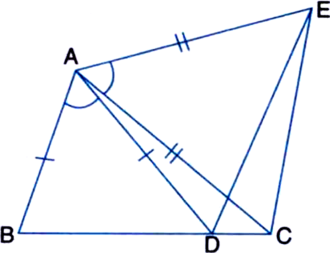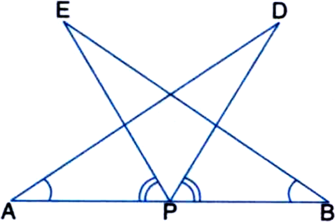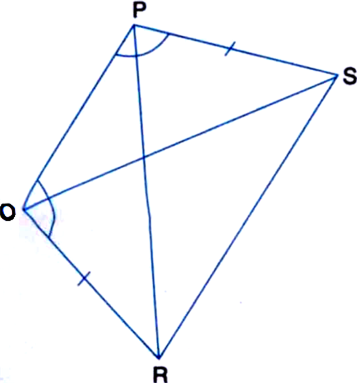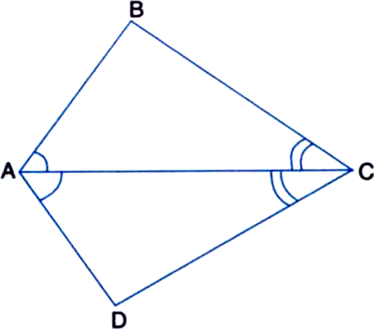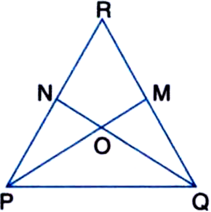If the bisector of the vertical angle of a triangle bisects the base of the triangle, then prove that the triangle is isosceles.
Given: A ∆ABC in which the bisector of the vertical angle ∠BAC bisects the base BC, i.e., BD = CD
To Prove: ∆ABC is isosceles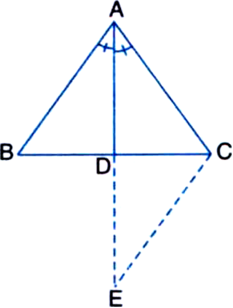
Construction: Produce AD to E such that AD = DE. Join EC.
Proof: In ∆ADB and ∆EDC,
BD = CD | Given
AD = ED | By construction
∠ADB = ∠EDC
| Vertically opposite angles
∴ ∆ADB ≅ ∆EDC
| SAS congruence rule ∴ AB = EC ...(1) | CPCT
and ∠BAD = ∠CED | CPCT
But ∠BAD = ∠CAD | Given
∴ ∠CAD = ∠CED
∴ AC = CE ...(2)
| Sides opposite to equal angles of a triangle are equal
From (1) and (2),
AB = AC
∴ ∆ABC is isosceles.




